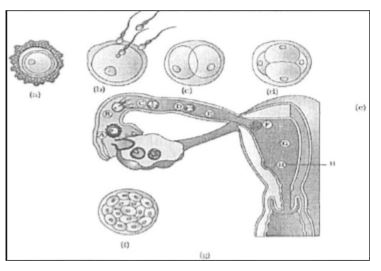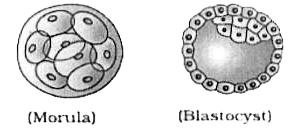Text Solution
Verified by Experts
|
Topper's Solved these Questions
PRACTICE QUESTION PAPER-2
CBSE COMPLEMENTARY MATERIAL|Exercise SECTION C|21 VideosView PlaylistPRACTICE QUESTION PAPER - 1
CBSE COMPLEMENTARY MATERIAL|Exercise SECTION A|2 VideosView PlaylistPRINCIPLES OF INHERITANCE AND VARIATION
CBSE COMPLEMENTARY MATERIAL|Exercise QUESTIONS (LA)|3 VideosView Playlist
Similar Questions
Explore conceptually related problems
Knowledge Check
Similar Questions
Explore conceptually related problems
CBSE COMPLEMENTARY MATERIAL-PRACTICE QUESTION PAPER-2-SECTION D
- The following is the illustration of the Transport of ovum, fertilisat...
Text Solution
|
Playing Now - The following is the illustration of the Transport of ovum, fertilisat...
Text Solution
|
Play - The following is the illustration of the Transport of ovum, fertilisat...
Text Solution
|
Play - The following is the illustration of the Transport of ovum, fertilisat...
Text Solution
|
Play - The development of endosperm precedes the development of embryo in ang...
Text Solution
|
Play - How does a meiocyte develop into the female gametophyte in an angiospe...
Text Solution
|
Play - Compare the growth models for the population growth of a species.
Text Solution
|
Play - Explain the Darwin's concept of 'Fitness of species'.
Text Solution
|
Play - What is an ecological pyramid? Write any two limitations of ecological...
Text Solution
|
Play - Compare the pyramids of energy, biomass and numbers.
Text Solution
|
Play - Watson and Crick suggested the copying mechanism for DNA wherein the t...
Text Solution
|
Play - Watson and Crick suggested the copying mechanism for DNA wherein the t...
Text Solution
|
Play - The shape of pea seeds and the size of starch grains in Pisum sativum ...
Text Solution
|
Play - The shape of pea seeds and the size of starch grains in Pisum sativum ...
Text Solution
|
Play - The shape of pea seeds and the size of starch grains in Pisum sativum ...
Text Solution
|
Play - The shape of pea seeds and the size of starch grains in Pisum sativum ...
Text Solution
|
Play

